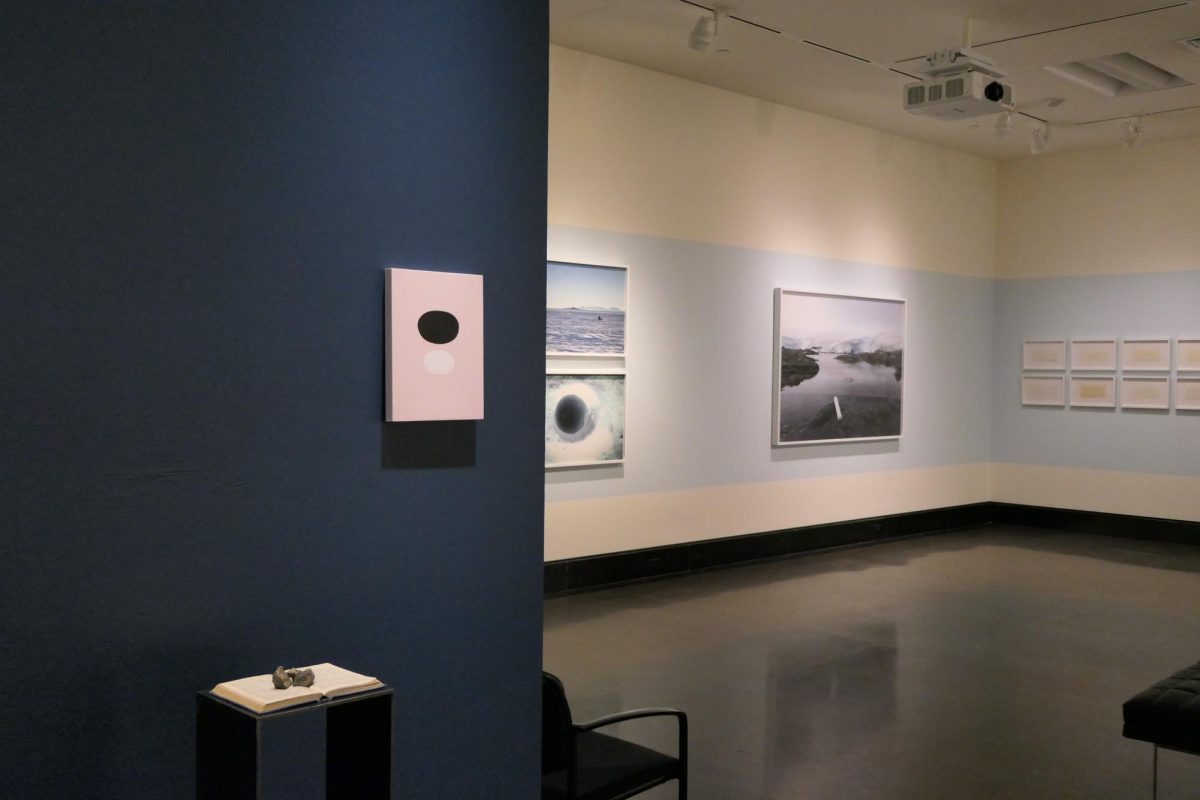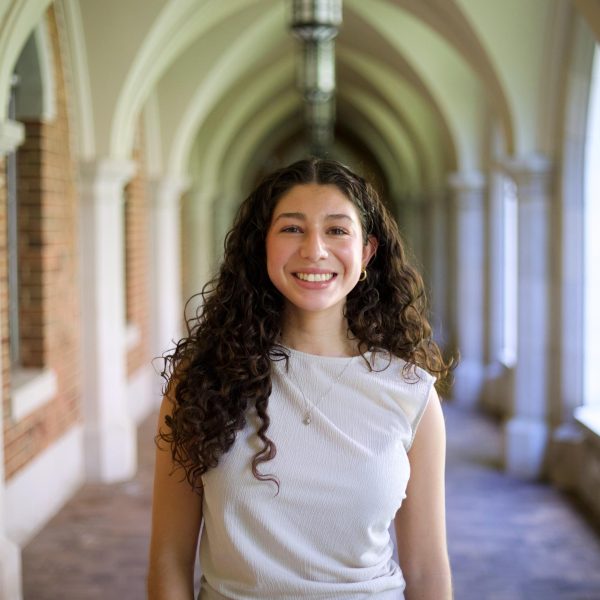This semester, the Vanderbilt University Museum of Art will be displaying “…no footprints, even.,” an exhibition of artworks created by Jessica Houston, an artist based out of Montréal. Houston’s work tends to be thematically centered around the Earth’s environment and climate change.
The exhibition consists of four major themes showcasing the impacts of climate change. The first area, titled Letters to the Future, includes letters written by researchers and thinkers who participated in a time capsule released into the Antarctic ice. According to Rachel P. Kreiter, who curated this exhibition alongside Jana Harper and Lutz Koepnick, this section was focused on getting viewers to think about the state of the environment upon the capsule’s release, which is expected to happen in a millennium.
“If I were asked to write a letter that was put in a time capsule and only revealed in 1,000 years, what would I write? What is important to say to people 1,000 years from now,” Kreiter said. “And it’s to really get you thinking, will this thing be found in 1,000 years?”
The next section, Over the Edge of the World, features collages made by Houston with images from a National Geographic magazine. With these collages, the artist is attempting to reconfigure the magazine’s images to reshape viewers’ beliefs on what spending time in the northern and southern poles feels like.
The third section, The Yelcho Expedition of the Antarctic, 1909–1910, includes paintings of fanfiction about an Antarctic expedition by the author Ursula K. Le Guin. Inspired by Le Guin’s story, these images continue to build on the themes and concepts from the previous section by using Houston’s imagination to depict how the expedition might have felt. Houston did this by depicting scenes in a similar style to the Impressionist art movement of the late-19th century.
The final section, The Magnetic Observatory, explores the concept of a magnetic pull that inspired European explorers to capture land across the globe.
“[Houston] is thinking through in a slightly more spiritual, distinct, less figural way what it means that human beings have tried to conquer those parts of the world through something that’s maybe a little bit more abstract,” Kreiter said.
The exhibition, “…no footprints, even.” features four different mediums that each work to convey a larger story of Arctic exploration and Houston’s own experiences researching the area.
“As a museum that really intends to show people all different kinds of artwork, we’re not looking to restrict ourselves to any one kind of artwork or any one kind of medium,” Kreiter said. “In this semester’s exhibition, you’ll find photography, we have audio works, we have painting and we have collages. So it’s quite a well-textured exhibition.”
The different forms used throughout the exhibit grant the viewer multiple ways of understanding the impacts of climate change. By providing varying ways to engage with her work, Houston brings the viewer into conversation with her art and its themes.
“I think the visitor will find this topic more engaging if they can see all of the different ways that she has thought through her themes and ideas,” Kreiter said. “Every visitor who comes in will have an opportunity to think through her ideas in a different way.”
Houston’s work explores larger questions about the relationship between humans and the environment. Combining artistic practice and scientific research, her pieces consider the effects of human activity and exploration on some of the most remote places on the planet.
“She’s interested in issues around climate, around the way that human beings exist with ecologies, and the way that she finds it productive to explore those topics is to approach it through different kinds of research-based art,” Kreiter said.
Mary Anne Caton, the Senior Associate Curator of Campus and Community Engagement, shared her appreciation with the exhibition and the connections and thoughts it is able to provide viewers with.
“Jessica Houston invites us to look deeply at our world and see art as a thinking experiment.” Caton said. “Her often-humorous collages upend traditional images of expeditions.”
“…no footprints, even.” is currently on display at the Vanderbilt University Museum of Art and will be on display until May 11, 2025.






